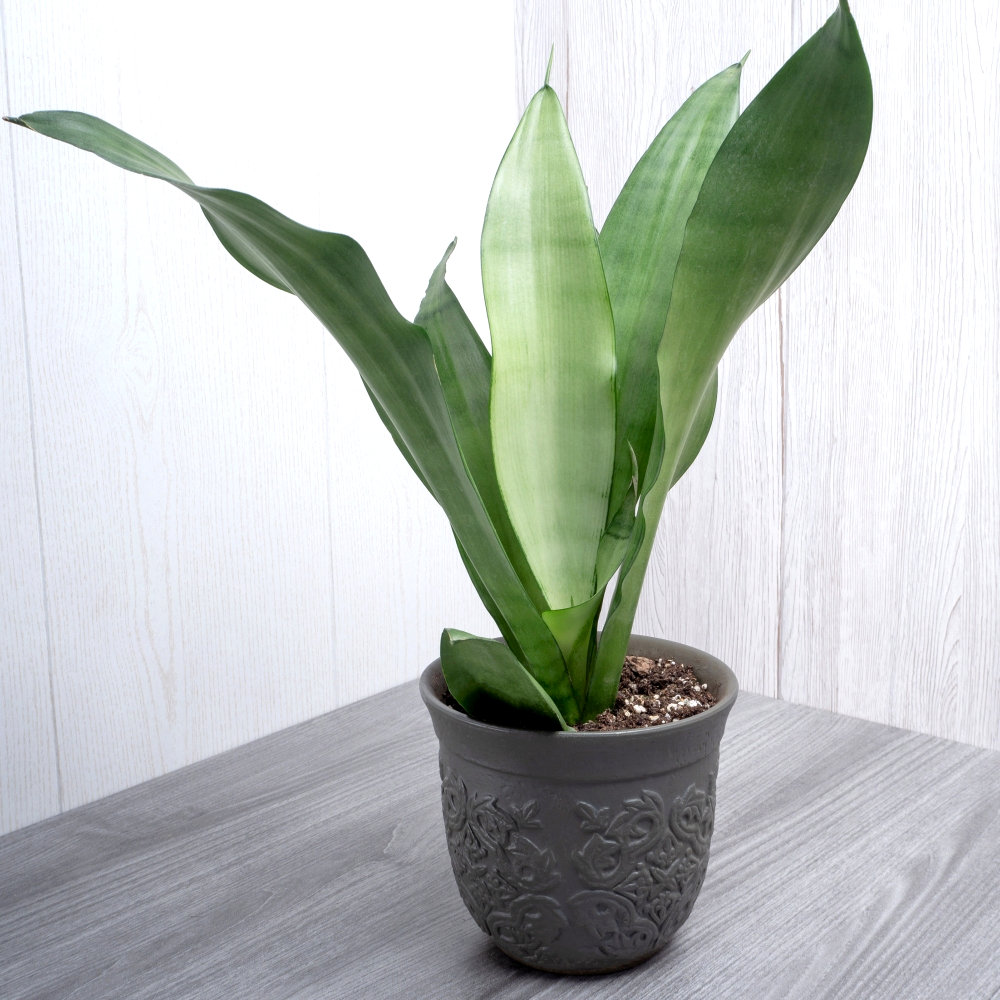The snake plant is one of the most popular household plants, famed for its low-maintenance upkeep and tall, vibrant leaves. Otherwise known as Dracaena trifasciata, or until 2017, Sansevieria trifasciata, the snake plant has become a staple member of any indoor plant collection. Whether you’re a beginner or an avid plant lover, this spiky, green species will make an excellent addition to your home.
Read on to learn all about snake plants and their care. We’ll discuss everything from interesting facts about the species to advice on growing them so they live long healthy lives:
The Best Plant Shops in the US Offering Nationwide Snake Plant Delivery
About Snake Plants
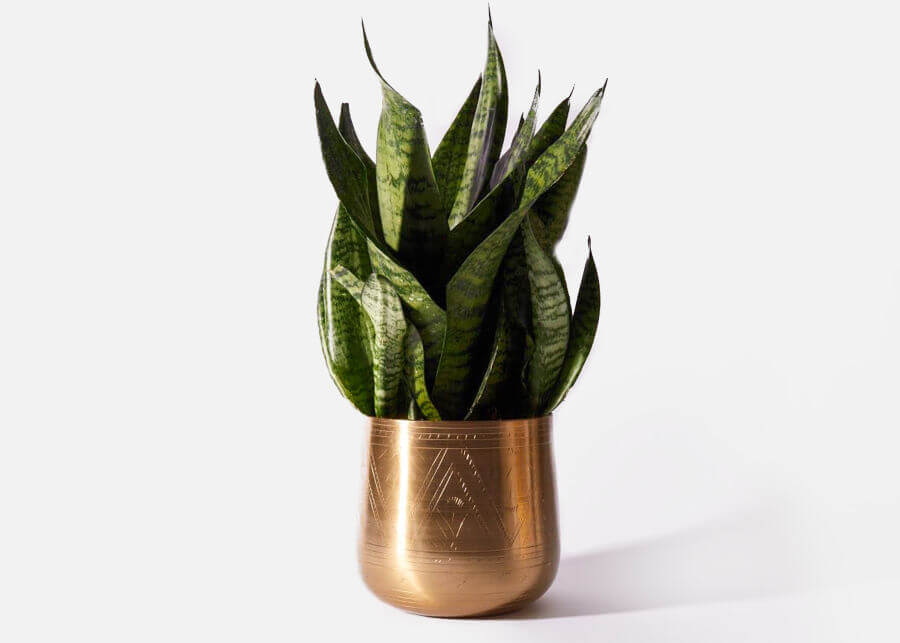
Before you learn about growing and caring for snake plants, there are plenty of fascinating facts to discover about this evergreen species. Let’s take a look at everything from origins and history to a few of the most popular varieties.
Snake Plants Origins and History
As it turns out, snake plants are so content in hot, sunny climes because they originated in the tropical forests of West Africa. Before they earned their role as a classic indoor plant, snake plants grew in the area of Africa stretching from Nigeria to the Congo. The species has since become popular as an indoor house plant around the world.
The genus of this plant was Sansevieria throughout its history. However, in 2017 the plant group was added to the Dracaena genus.
Scientific Facts about Snake Plants

Since the snake plant’s title was updated, it goes by the scientific name of Dracaena trifasciata. It belongs to the Asparagaceae plant family along with, as you may have guessed, garden asparagus. However, don’t attempt to nibble a leaf yet, as we’ll get to toxicity later on in the guide.
The plant is native to West Africa and comes in several varieties. A few of the types are Hahnii, Laurentii, Compacta, Goldiana, and Silbersee. Among the varieties, you’ll find a range of shapes and sizes, from dwarf snake plants to a twisted-sister variety with wavy leaves.
Interesting Facts about Snake Plants
The plant has many unique names across different cultures. In English, it is commonly known as the mother-in-law’s tongue. The Portuguese refer to snake plants as Espada de São Jorge or Saint George’s sword. The plant’s Japanese nickname is tiger’s tail.
Snake plants offer a host of beneficial properties. It turns out, the variegated variety of snake plants, or Dracaena trifasciata ‘Laurentii’, made NASA’s list of air-purifying plants in their Clean Air Study.
It was one of several plants confirmed to help remove toxins in the air. The plant pumps out fresh oxygen, especially at night, doing its part to keep its home clean and tidy.
Most Popular Snake Plant Varieties

Now, you can find as many as 70 types of snake plants, each with its own unique version of the species’ signature upright leaves. The following varieties are just a few of the most popular types of this tubular, verdant plant:
- Dwarf snake plant, or Sansevieria trifasciata ‘Compacta’
- Mother-in-law’s tongue, or the classic Sansevieria trifasciata
- Golden snake plants, or Sansevieria laurentii Superba
- Variegated snake plant, or Sansevieria trifasciata ‘Laurentii’
- Silver Bird’s Nest, or Sansevieria trifasciata ‘Silver Hahnii’
- Mason’s Congo Snake Plant, or Sansevieria masoniana
You’ll be able to find several varieties of snake plants at most plant stores. They each have similar needs but will differ slightly in color, shape, and size.
Snake Plant Meanings and Symbolism
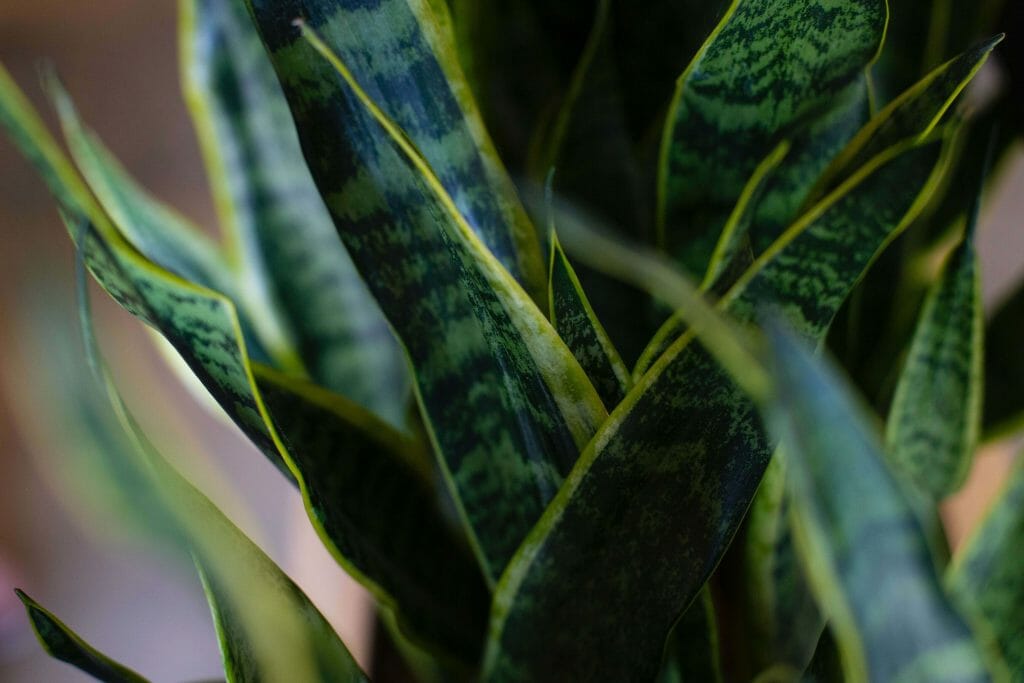
In Nigeria, snake plants are associated with Oya and Ogun, spirits associated with storms and war. Nigerian rituals involve using the plant to ward off evil.
Many also refer to the snake plant as the good luck plant and is particularly well regarded in feng shui practices.
How to Grow Snake Plants (for indoor plants)

Before you grow a snake plant at home, there are a few things you will want to consider. Read on to learn everything from how to prepare your home for an indoor snake plant to the best types of soil to use.
What to do before Planting Snake Plants
Here are a few steps to take before bringing home your new snake plant.
- Have a terracotta pot and saucer on hand for repotting your new snake plant.
- Make sure you have the correct soil and tools for repotting your plant once you bring it home. These are listed in detail below.
- Clear a nice space to keep your plant, so you can put it there once you’ve repotted.
- At the store, choose a plant with dark green leaves. This is a sign that the plant is healthy.
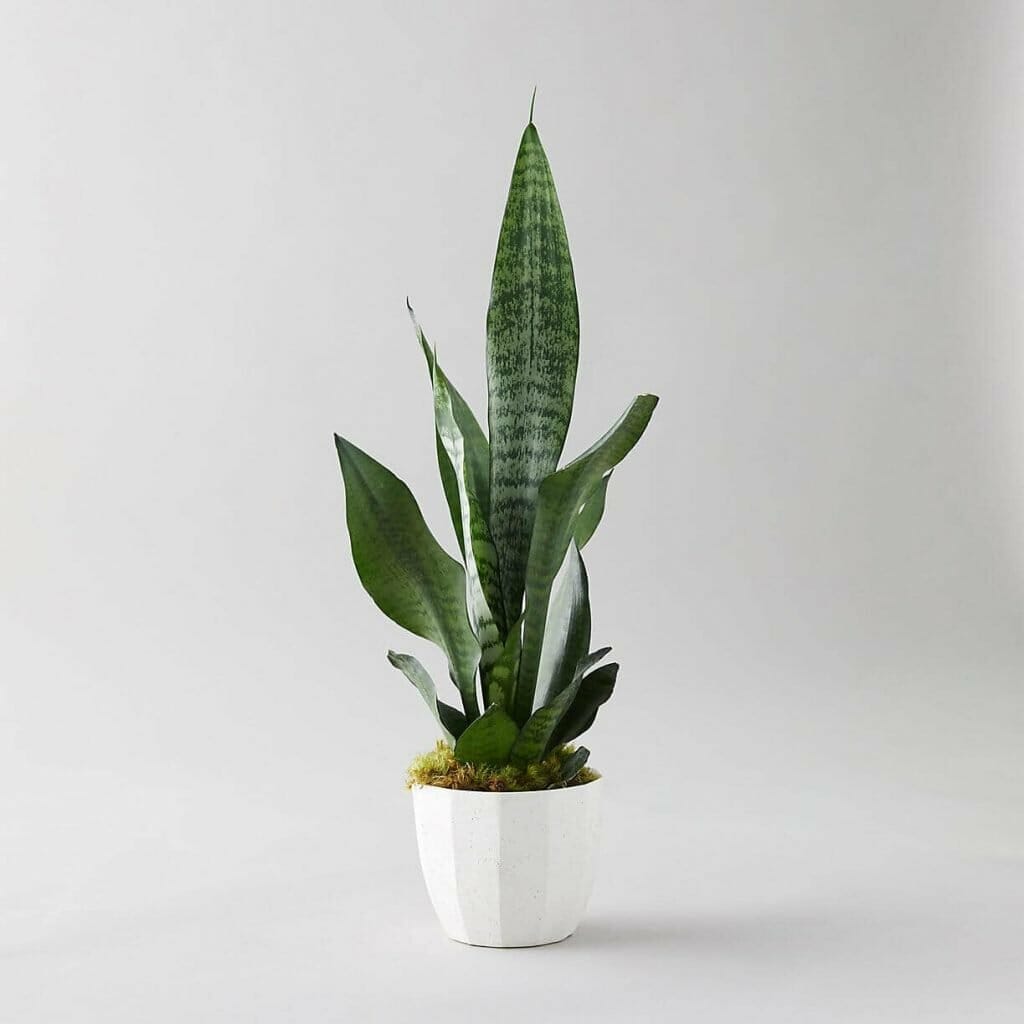
Credit: Terrain The most suitable pots for your snake plant are terracotta. This material absorbs moisture quickly, so it can prevent excess water from gathering in the soil. Make sure the pot has a drainage hole, as this plant is prone to root rot.
The ideal pot size will depend on the size of your snake plant. Choose a pot that is about one size bigger than the container your plant comes in. Below we’ll cover the best conditions for your plant to thrive, from soil to light preferences.
The Best Soil Mix for Snake Plants
The best type of soil to use for your snake plant is a free-draining soil mix. They do well in blends used for cacti, as these usually drain well and prevent excess moisture from accumulating. Some plant owners like to use sand, perlite, or peat moss to aid with drainage.
For more, see our essential guide to the best soil mix for snake plants.
How Big do Snake Plants Grow?

As there are around 70 varieties of snake plants, they vary significantly in size. Dwarf varieties can be as small as eight inches, while larger snake plants can reach six feet or higher. Research your snake plant variety to learn how tall it may grow.
For more, see our essential guide to snake plant growth expectations indoors.
Snake Plant Light Preferences

Snake plants do well in a variety of lighting environments, including direct sunlight and low light. However, their preferred light environment is bright indirect light.
This hardy plant can thrive in any room with nearly any type of lighting. But, since they act as air purifiers, snake plants make a great addition to a bedroom or home office.
For more, see our in-depth guide to the best positions for Snake Plants to thrive.
How to Care for Snake Plants

Next, it’s time to learn how to take good care of your snake plant. This sturdy, beginner-friendly plant is very tolerant of minimal care. Take the simple steps below and watch your plant thrive.
Snake Plant Watering Preferences
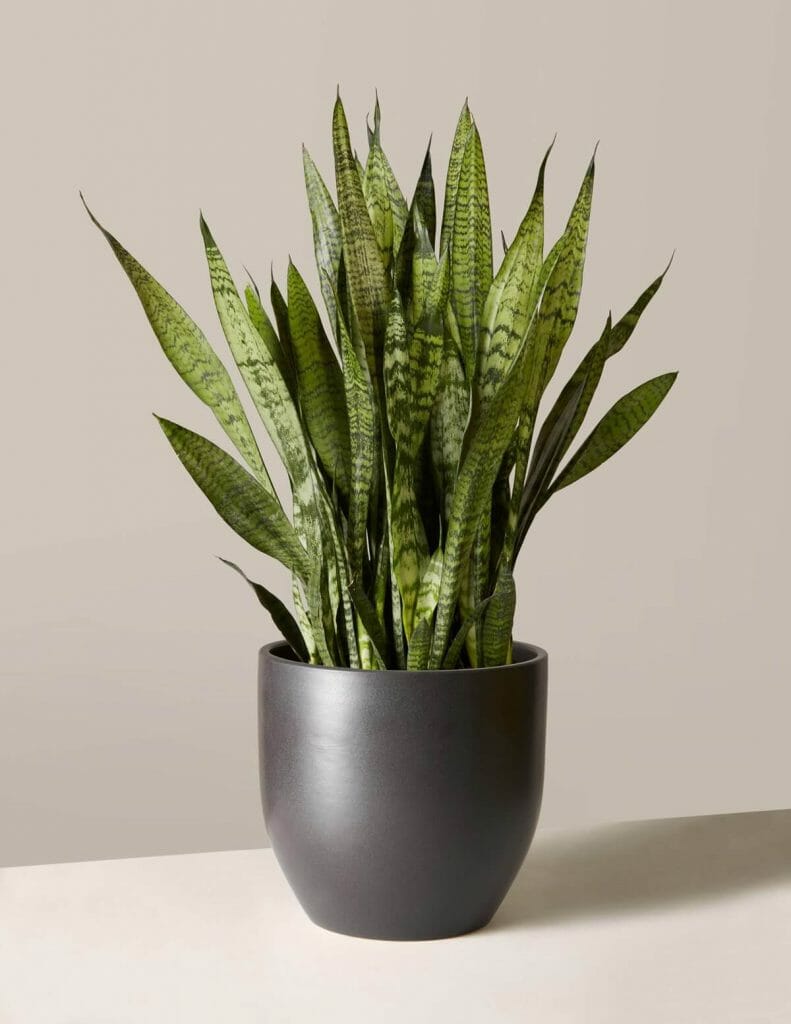
Simply put, your snake plant does not need much water. Water your plant every two to eight weeks. This will depend on the humidity of your home and the time of year. Only water your plant if the top two or three inches of soil has completely dried out since its last watering.
If you overwater, your snake plant’s roots may begin to rot. If you notice its leaves falling over, this may be the cause.
In the same vein, do not mist your snake plant. As with the rest of the plant, its leaves like to stay dry, so misting can contribute to rotting.
For more – see our essential guide to watering snake plants at home.
Snake Plant Feeding Preferences
Snake plant owners fertilize the plant with either a compost mix or a simple household plant food. Both work well. It is good to feed your plant once or twice in the warmer months of spring and summer.
If you choose to fertilize your snake plant with compost, avoid using too much. As compost tends to store water, it may over-hydrate your plant.
Snake Plant Pruning Tips
Your snake plant does not specifically require pruning. If you notice a few of the outer leaves begin to lean or fall over, you can prune them. Just cut a straight line at the bottom of the leaf at the soil line and save it, as it is a great candidate for propagation.
Snake Plant Propagation Tips

Propagating snake plants from a leaf cutting is an excellent option if they have begun the slump or fall away from the rest of the plant. Since the plant grows more in the warmer months, this is the ideal time for plant propagation. Follow the instructions below for successful snake plant propagation.
- Use sharp pruners to snip a straight line across the base of the leaf you want to propagate, at the soil line.
- Cut five to ten inches off the bottom of the leaf to remove the weak portion that was causing it to droop.
- Wait between two days to a week before propagating the leaf. Since the leaf contains a significant amount of moisture, adding it straight back to the pot may cause it to rot.
- Once the leaf’s cut has sealed over, place it back into the pot with the rest of the plant. Alternatively, you can put it in a new container on its own. You may want to tie the leaf to a stake, so it stays standing as it takes root.
- You can also divide your snake plant up into sections if you’d like to place it into separate pots. Do this using shears, ensuring there are at least three rhizomes and one healthy leaf moving into the new container.
Snake Plant Repotting Tips

Although the plant enjoys a crowded root system, it does need the occasional repotting. If your snake plant’s roots have begun to grow through its pot’s drainage hole, you know it is time to repot. Here are a few things to keep in mind when repotting your snake plant.
- Repot your plant in the winter or early spring. It is best to repot the plant when it is not actively growing.
- If you turn your plant over and it doesn’t budge from the soil, it is time to repot.
- When repotting, use a pot that is one or two inches bigger than your current container.
- If your plant has grown much taller, you should consider repotting in a broader pot to ensure it doesn’t become too top-heavy.
- Repot the plant by removing it gently from its current pot, making sure not to harm the root ball.
- If you see any places where root rot has formed, gently cut them away with a sharp knife.
- Your plant shouldn’t need to be repotted often. Repot the plant every three to six years.
As you may have noticed, the most common issue for snake plants is root rot. To avoid this, simply ensure you are not overwatering the plant. Here are a few other points to consider if you’re concerned about your plant’s health:
- Where at all possible, avoid exposing snake plants to extreme temperatures or variations in temperatures.
- Insect infestation such as vine weevil or scale. If you notice an infestation, remove the infected leaf, larvae, and affected mulch or soil.
- Fungus such as red leaf spot or southern blight. These could be the result of overwatering. If you notice them, reduce the plant’s watering schedule, try treating the soil with heat, and cut away any dying leaves.
For more, see our essential guide to dealing with common snake plant pests, bugs, and diseases at home.
Snake Plant Toxicity

Unfortunately, your snake plant does have one flaw. All parts of the plant are toxic to both humans and pets if ingested. The plant can cause nausea, vomiting, or diarrhea if any part is consumed. Always keep your snake plant out of reach of your children and furry friends, including dogs, cats, and rabbits.
Since your snake plant is so easygoing, it does not require any special tools for maintenance. Let’s review some of the items you will need throughout the plant’s life.
- A terra-cotta pot
- A terracotta saucer to place beneath the container for drainage
- Free-draining soil mix
- Sharp shears for pruning and propagating
- Stake and twine for supporting propagated leaves
- Larger pots for repotting at the plant grows
This plant is excellent for new plant owners who don’t have many tools. As long as you have a nice pot and a good soil mix, you’re ready to bring your new plant home.
Snake Plant Care – The Final Word
Snake plants make an excellent household companion for green thumbs and novice plant owners alike. Buying one is a great way to test out your plant-owning skills. Simply find a beautiful space for your new houseplant and breathe in the fresh, purified oxygen it has to offer.
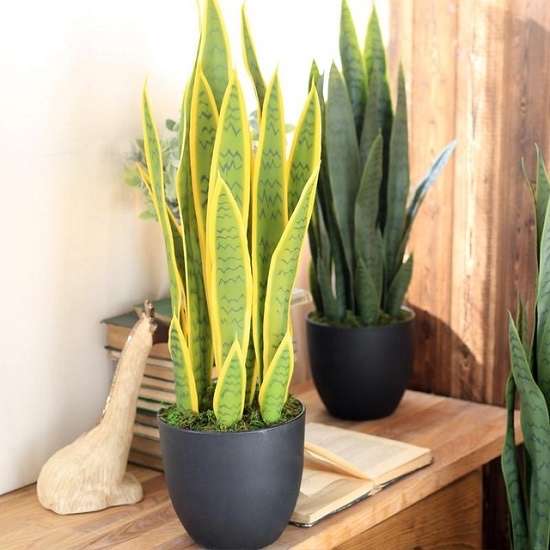
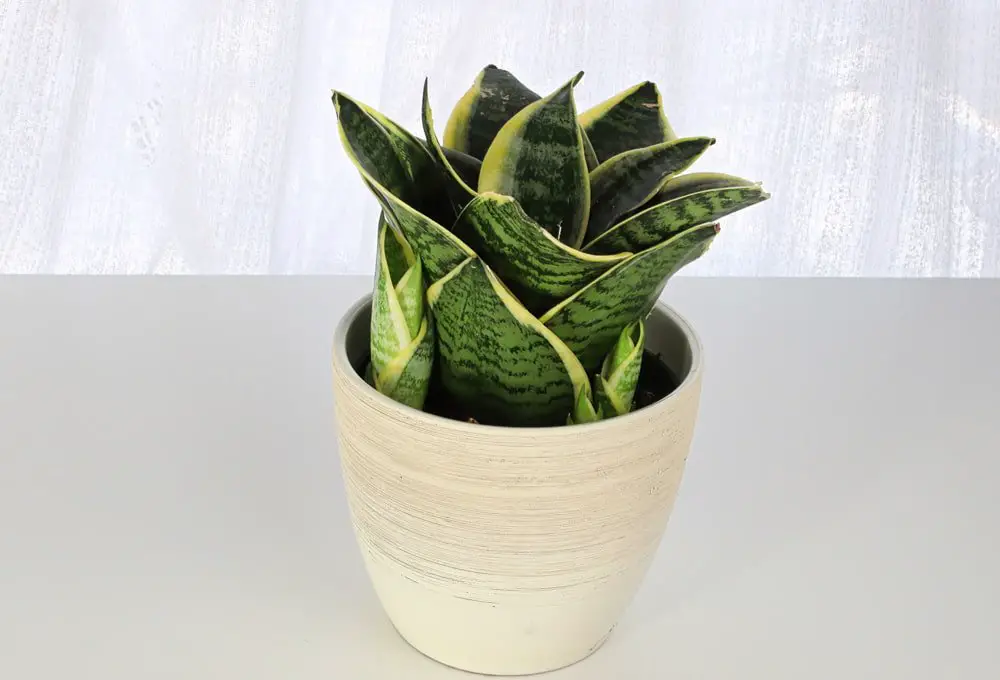
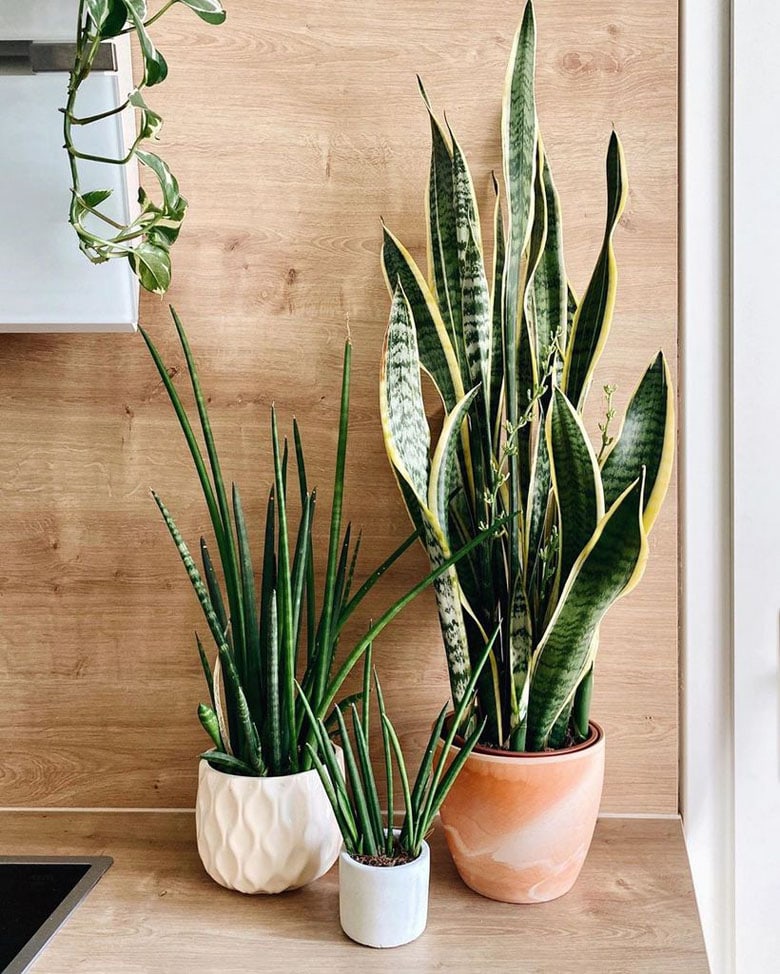
:max_bytes(150000):strip_icc()/eight-houseplants-that-thrive-in-low-light-8-0922-2000-39845777816b4f1f8a49b6ef758ef35e.jpg)
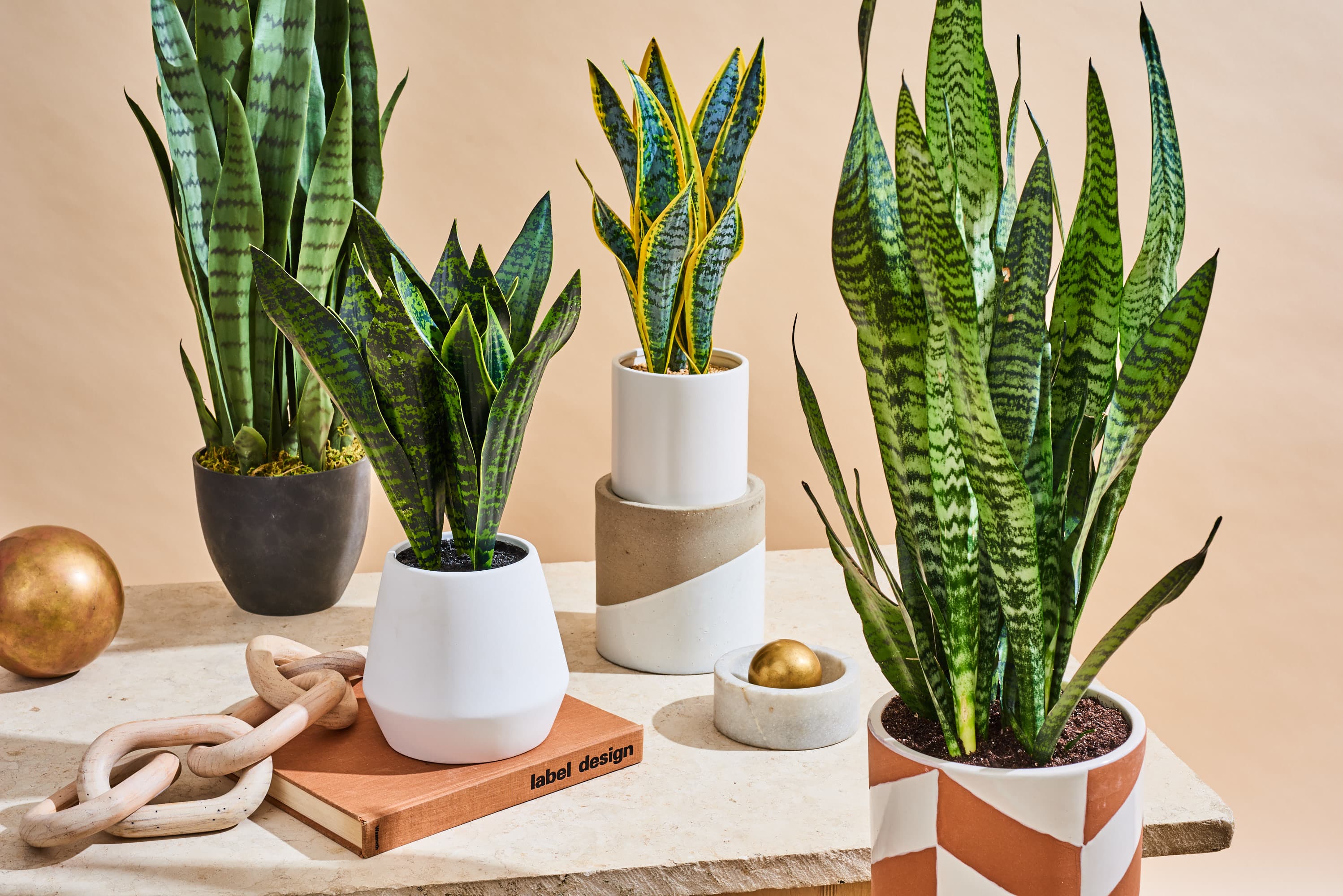
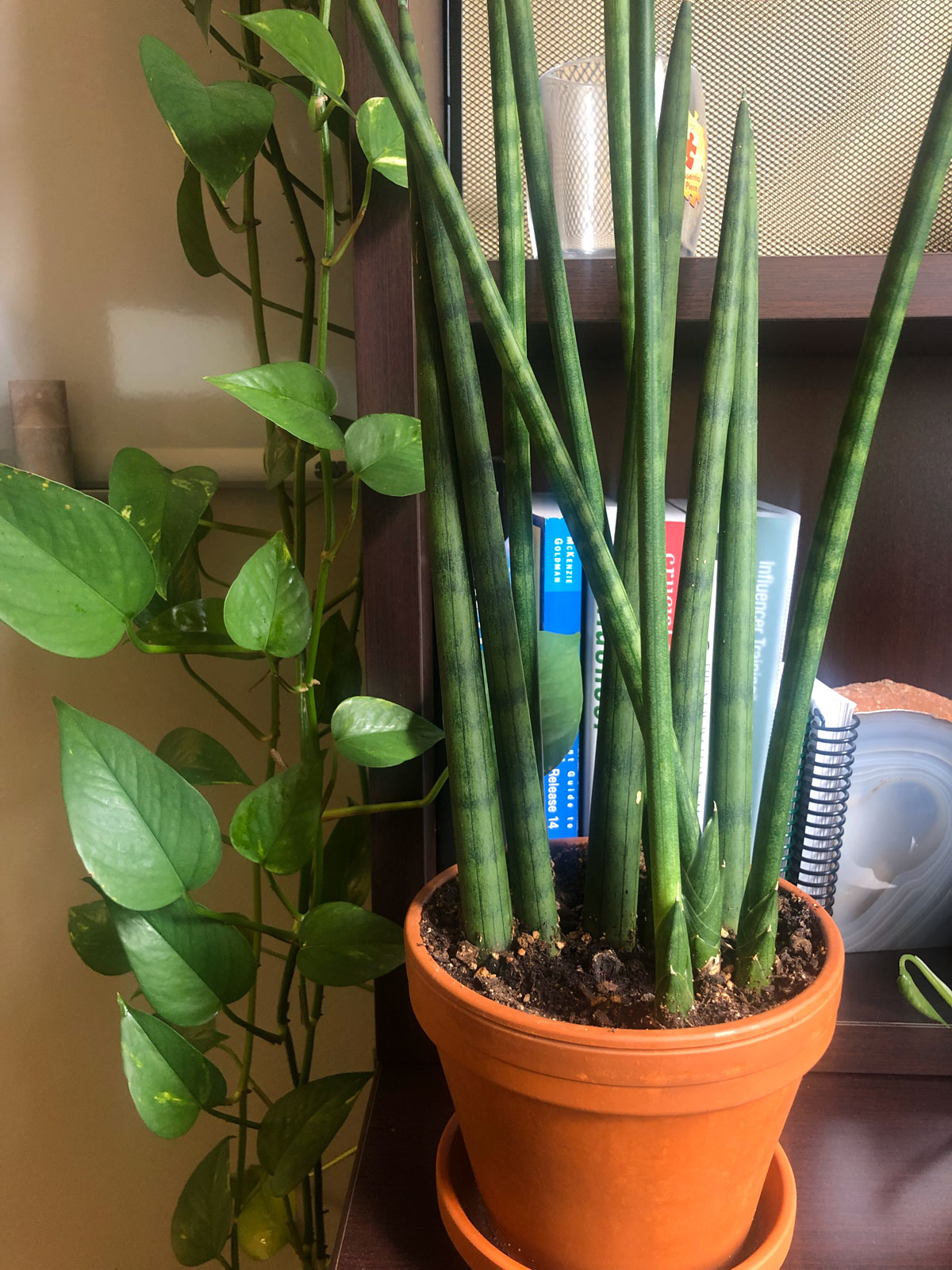
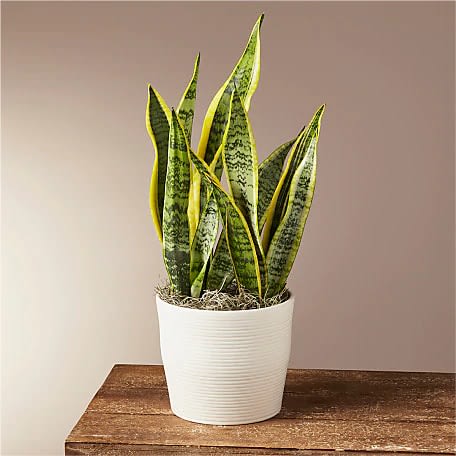
:max_bytes(150000):strip_icc()/GettyImages-1271960631-2000-45820e612768439cb51bbd4408d37caf.jpg)

